How to Make Whisky
Whisky, often hailed as the "water of life," has a rich history and intricate production process that captivates enthusiasts worldwide. But what might surprise some is that, despite whisky's ascent to one of the most globally adored spirits (not to mention one of the most luxurious additions to any top shelf), very little has changed in how it's made since the very early days. Single malt whiskies are made using tried-and-true traditions, proving the power of simplicity and heritage.
Before we explore the fascinating process that sees simple ingredients become your favourite single malts, first, what exactly do we mean by that term?
A single malt is any Scotch whisky, made in pot stills, which has been distilled in one or more batches at a single distillery using water and barley without the addition of any cereals. Single malt whisky production dates back to 18th century Scotland - and the process remains largely unchanged.
Read on to unravel this journey from grain to glass...
01
Water
There would be no life without water. That’s why the site of a distillery is often determined by the discovery of a pure source, like a spring or mountain stream. In addition to forming a large portion of the finished product, water is essential to whisky production. Water encourages the barley to germinate during the malting process and is added at the mashing stage to extract the sugars and make the wort. Distilleries also need cold water to condense the vapours back into a liquid.
Some whiskies also benefit from the addition of a little water in the glass, releasing flavours which might otherwise be masked by notes of peat or brine. The water used in the process must be potable and free from contaminants, high levels of minerals and organic matter. When it comes to production, the distillery needs its water source to be a constant, high-volume supply and – ideally – at a regular temperature for condensing the distilled vapours.
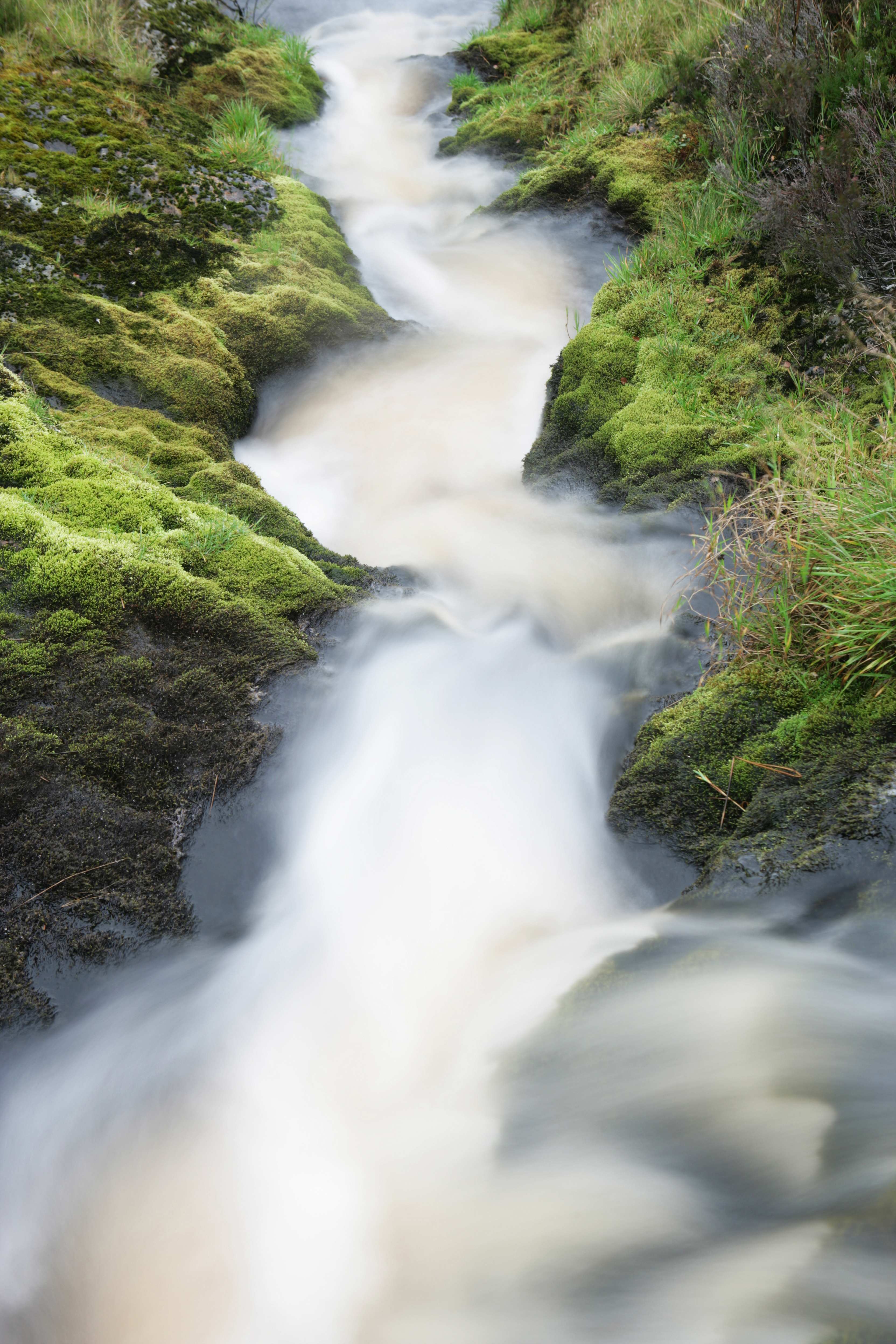
02
Barley
Cereal grains are the staple ingredients of whisky because they provide the starch which becomes alcohol. Scotch can be made from wheat, oat, rye, maize or corn, but to be a Single Malt Scotch Whisky the grain must be barley. For generations, barley was grown by the distilleries themselves or on surrounding farmland. In some cases, landowners built distilleries to create a market for the crops produced by their tenants. Today, whisky is made using barley from all over Scotland, England and Europe.
Barley from Britain is grown mainly on the east coast where the light sandy soils and lower rainfall provide the ideal conditions to produce the high-quality grain suitable for malting – one with a large corn size, and so more of those essential starches. Barley is graded on a scale of 1–9 for quality and consistency, and only the top three grades are suitable for malting. Once ripe, the barley is harvested and dried to remove all but 12% of the moisture so it can be stored, but still retain the ability to germinate at the next stage: malting.

03
Yeast
Yeast is the final ingredient necessary to make malt whisky, although you could say it was just a biological part of the production process, as its role is to convert sugar into alcohol. Up until the 19th century, people didn’t understand exactly what yeast was – whether it was animal, vegetable or mineral. It is in fact a micro-organism related to fungi, and there are countless strains of it floating around in the air just waiting for the right conditions to multiply
Only a few yeast strains are suitable for fermenting malted barley, and the yeast strain distilleries use to ferment influences the alcohol yield and can influence the flavour. These cells only come to life when the right conditions – warm, wet and with plenty of sugar – are available. When they find the right conditions, yeast cells can double their numbers in a couple of hours. In addition to alcohol, the yeast generates carbon dioxide and other compounds called congeners. These include higher alcohols which contribute to the final flavour of the malt whisky.
04
Malting
Malting is the first step in turning barley into whisky, and it begins with steeping. In the field, barley will take weeks or even months to begin germinating. By immersing the barley in water three times, with air breaks in between, the grain can be tricked into germinating in a matter of days. The maltster will vary the length of time underwater and the duration of the air rests to ensure the optimum germination. After steeping, the barley is cast into large drums where cool, humidified air is blown through it to control the temperature.
Over five days, the barley sprouts, breaking down the cell walls within the gain and producing enzymes which will eventually convert the starch into soluble sugars known as maltose at the mashing stage. These sugars are meant to give the young plant the best start in life, and the maltster’s true skill lies in allowing germination to progress to a point where the cell walls have broken down, but the growing plant has not yet used too much of the starch. To prevent full germination and preserve the sugars, the barley must be heated and dried: this is done through kilning. In the past, the design of these kilns led to the installation of the distinctive distillery pagoda roof. As the main form of fuel up until the late 19th century, distilleries burned peat or coal in an open kiln to dry their barley and so imparted the salty reek for which many whiskies became famous for. If a distillery wanted unpeated malt, they used a closed kiln. Nowadays, gas is used to produce hot air which dries the grain, and peat smoke is introduced depending on the style of the whisky.
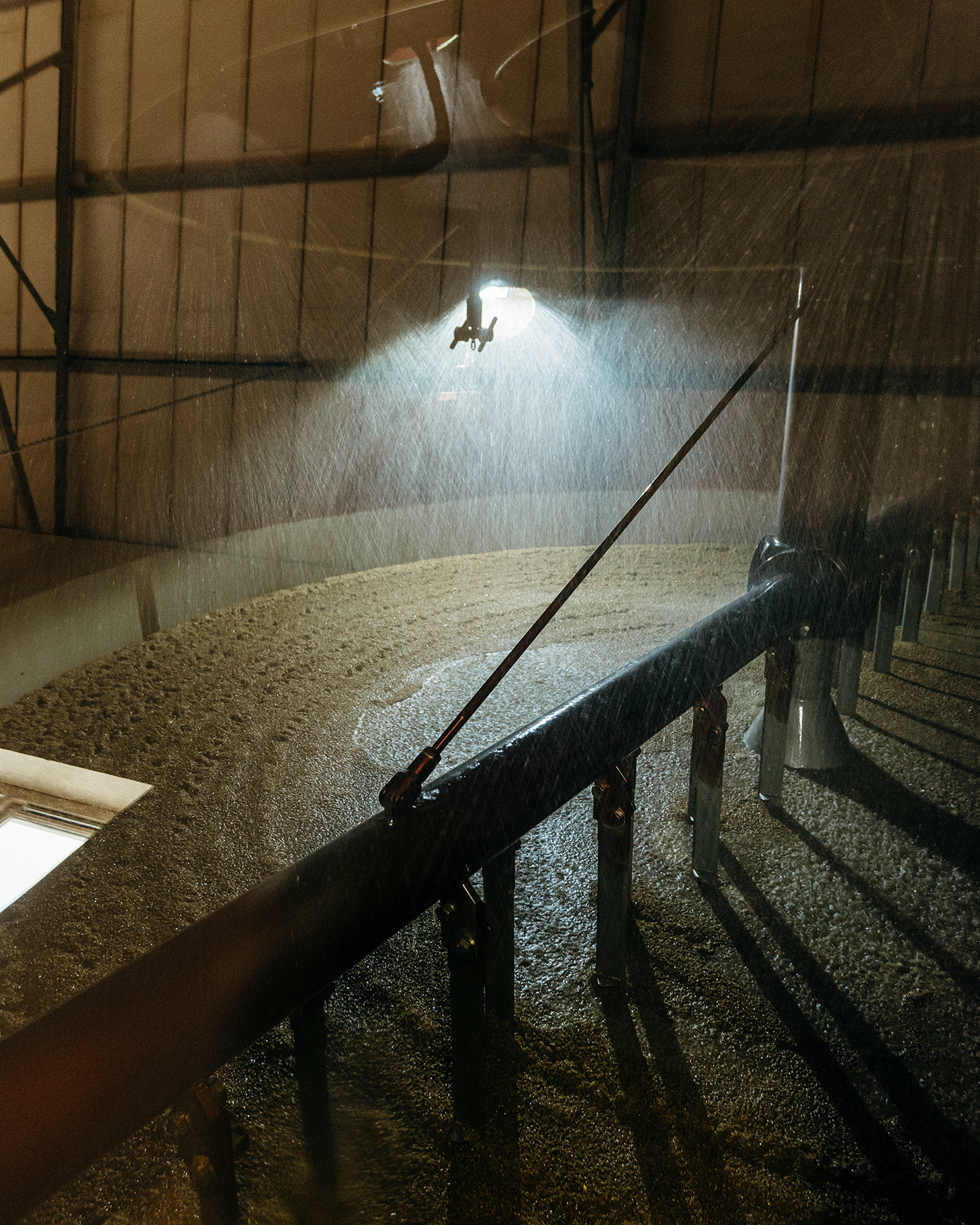
05
Milling
Malting often takes place at dedicated maltsters, and so the first part of the whisky-making process to take place at the distillery is milling. The malted barley must be dried to around 5% moisture level before milling can begin, or it will clog up the mill. The mill takes the dried malt and uses giant rollers to grind it into a coarse flour called grist.
Grist comprises of husks, larger particles called grits, and fine flour. The grist should have a ratio of around 70% grit, 20% husk and 10% flour. Too fine a flour and could get stuck in the mash tun at the next part of the process. Too coarse and the liquor will drain too fast and not enough sugar will be extracted.
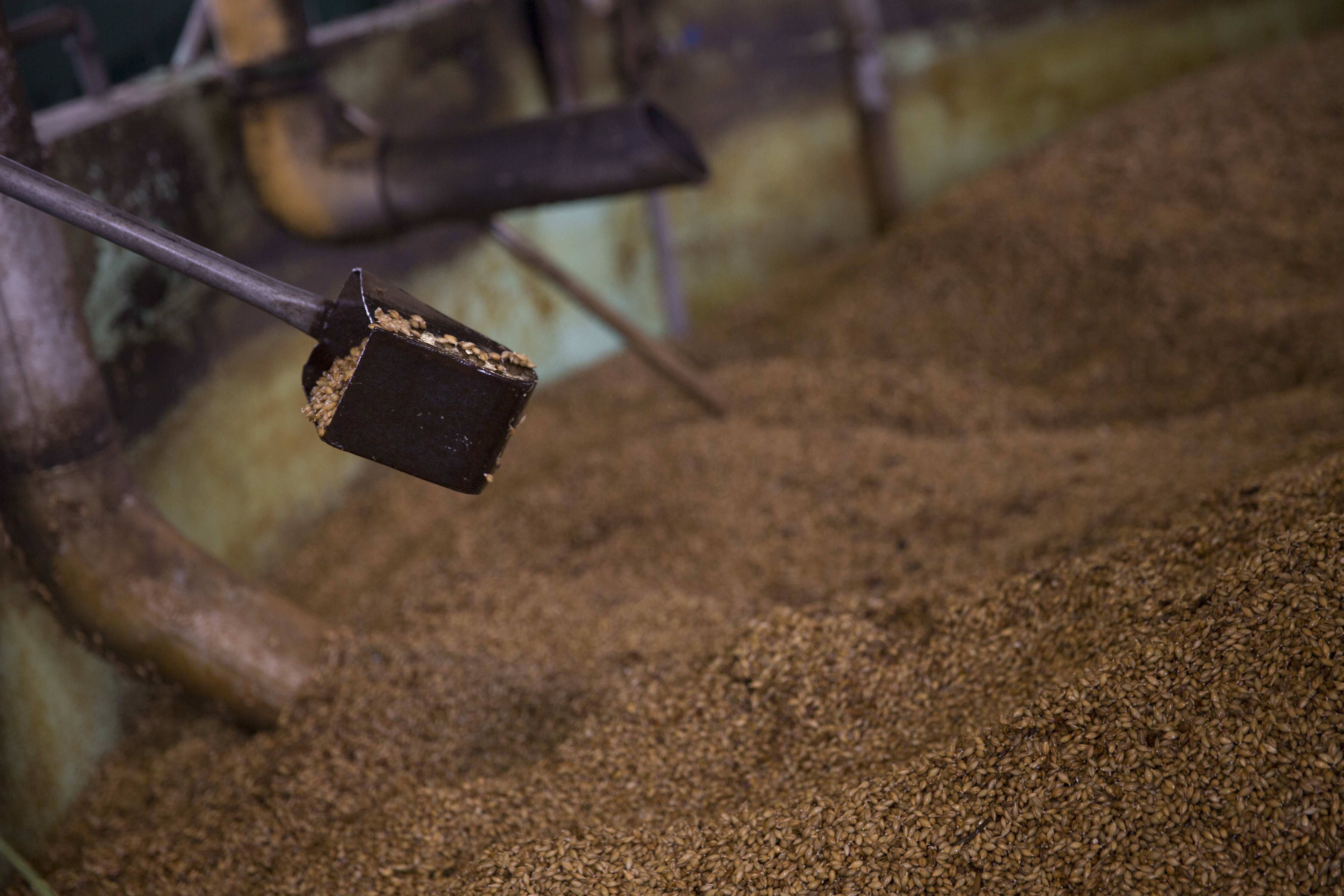
06
Mashing
The grist is fed into the mash tun and hot water is then added, working with the enzymes from the malting stage to dissolve the sugars. The optimum heat at which the enzymes will break down the starch is known as the ‘strike point’. Control of this temperature is vital because if the water is too hot it will kill the enzymes. This process is called mashing and the resulting liquid, not too dissimilar to barley water, is called the wort.
The wort is then drained off through the perforated floor of the mash tun and cooled to between 16 and 20 degrees centigrade ready for the next stage. The remaining barley husks are sent for processing into draff: a by-product which has been used as a nutritious cattle feed for probably as long as man has fermented grain alcohol and kept cattle. Up until this point, no alcohol has been produced – but that changes at the next stage.

07
Fermentation
The cooled wort is filled in vessels known as washbacks, made usually from larch or pine wood, or more commonly these days, stainless steel. Yeast is added to the cooled wort as it enters the washback so that fermentation can begin – the yeast cells multiply and turn the mixture into alcohol and carbon dioxide. The mixture is now called wash. As fermentation occurs, the temperature and alcohol level of the wash increases to about 35 degrees centigrade which in turn causes the yeast multiplication to slow down. The final result is a liquid with about 8-9% alcohol by volume, and up until this point, the process is fairly similar to brewing beer.
A secondary bacteria fermentation begins in the washback, producing lots of complex chemicals. This affects the degree of acidity of the wash and can influence the character of the final spirit. Another factor is the length of fermentation time: spirit produced from wash that has been fermenting for less than two days is significantly different from wash that has been fermenting for longer. The former has a very specific nutty/spicy character which overrides and masks other characters present.
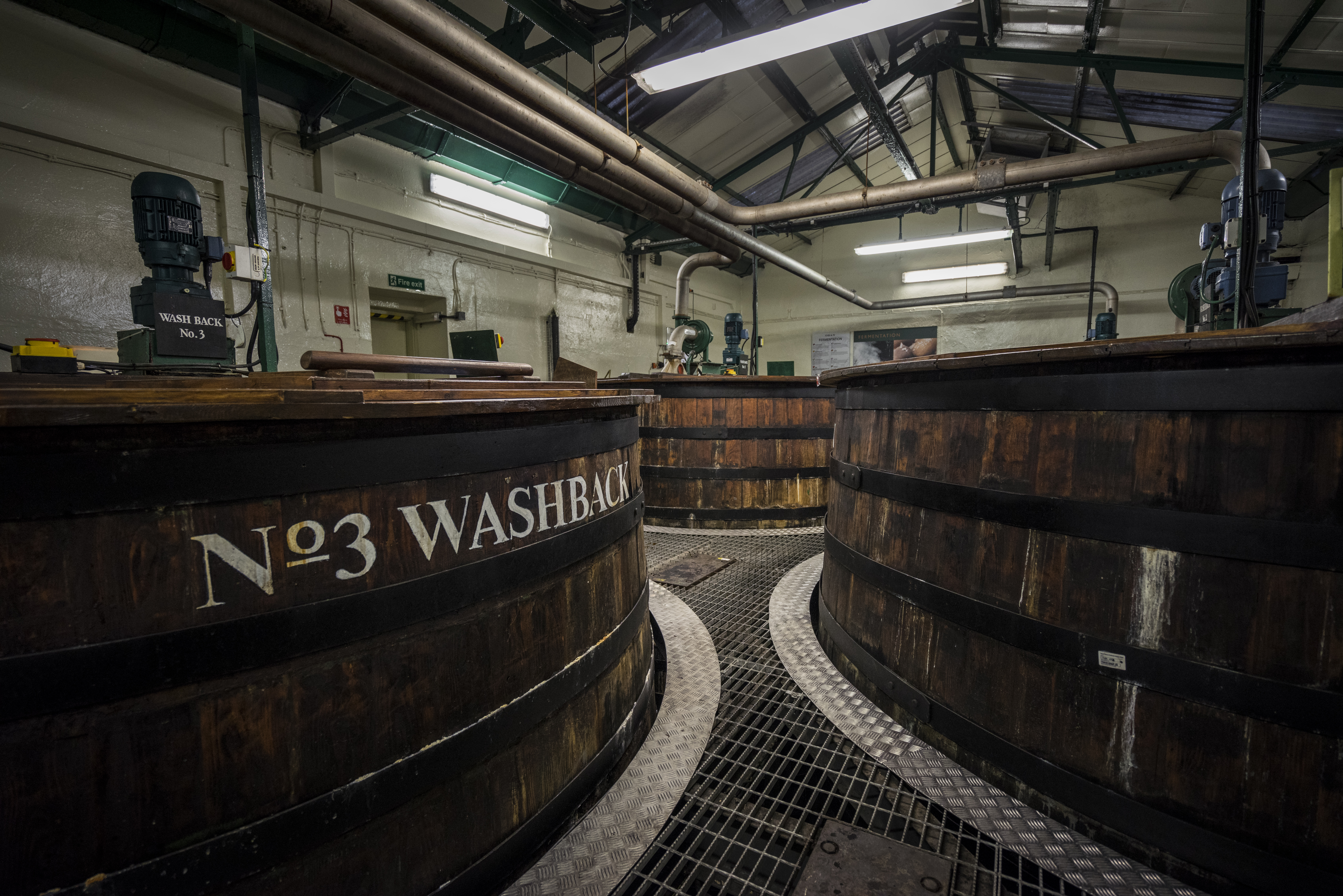
08
Distillation
Distillation is the ancient technique of heating a liquid to separate its component substances. To make a Single Malt Scotch Whisky, Scottish distillers must use a pot still made of copper in a process known as batch distillation. To begin with, the wash is heated in a wash still and when it reaches 78°C the alcohol boils and vapour rises into a condenser. The result is a liquid known as ‘low wines’ with a much higher alcohol content – around 23% ABV. This is transferred to a second still called the ‘low wines’ or ‘spirit’ still where the process is repeated to yield a liquid that is around 70% ABV. During this second distillation, the distiller must know when to separate the ‘middle cut’ or ‘main run’ of the spirit from the early ‘foreshots’ and the ‘feints’ or ‘after shots,’ which contain less desirable components.
Each distillery has its own cut point which influences the character of its whisky – as it’s the middle cut of the distillation, known as New Make or the Heart of the run, that goes on to mature in oak casks. The shape, size and number of stills and how the distillate is condensed can have an important influence on the flavour and character of the final spirit, because of the liquid’s contact with the copper. Tall stills or stills with a lye pipe which angles upwards allow greater reflux, giving a lighter spirit. Stills with a smaller surface area or a downwards sloping lye pipe tend to produce a heavier spirit.
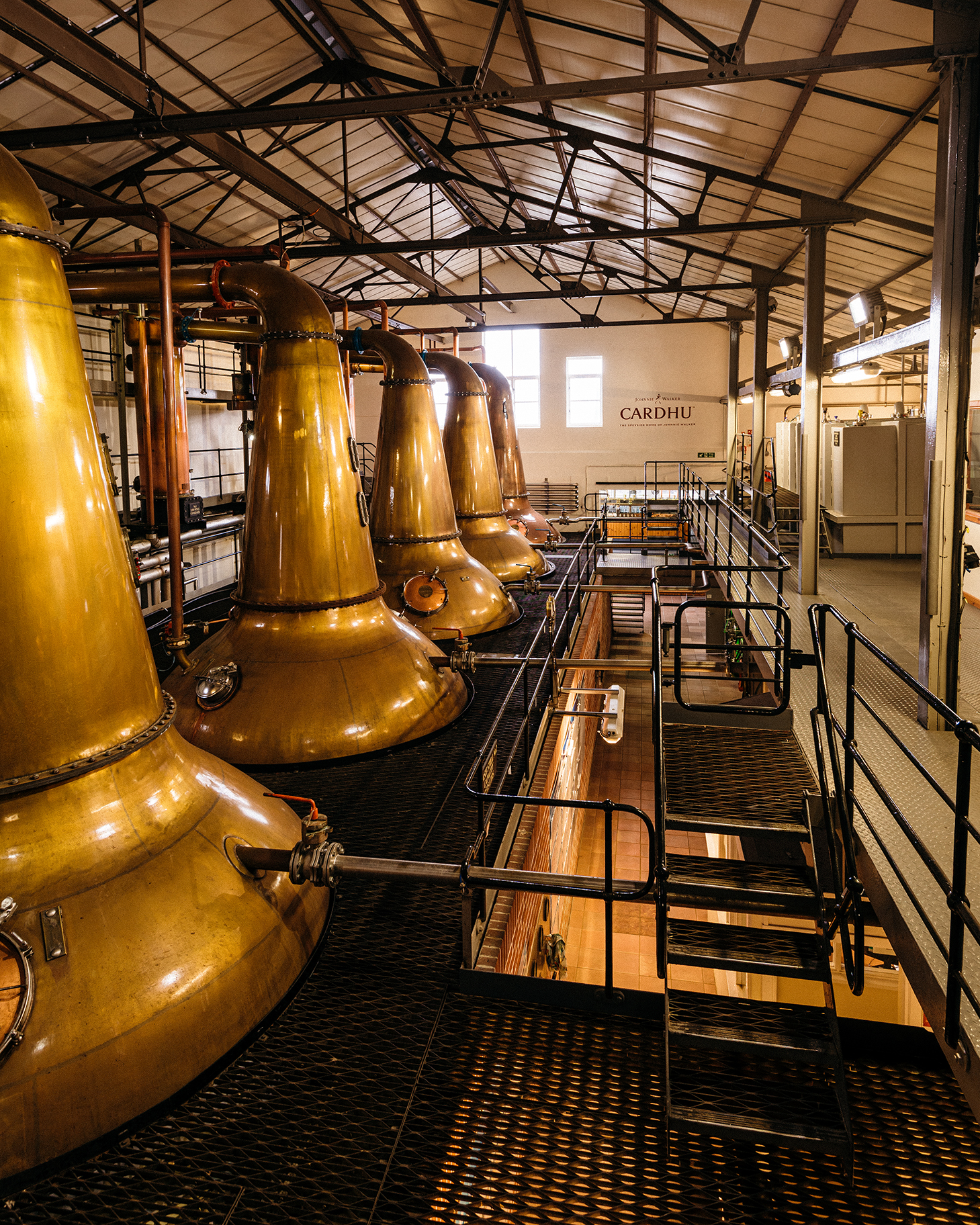
09
Maturation
To be a Scotch whisky, the new make spirit must sit in the oak cask in Scotland, for at least three years. Single malts sometimes mature for as long as 70 years. But the process of maturation isn’t really about age: it’s about timing and wood. Oak is the wood of choice for Scotch because of its intricate chemistry – with cellulose and hemicellulose caramelising the liquid, adding sweetness and colour; lignin which breaks down, giving complexity and vanilla notes; and tannins which add astringency, fragrance and delicacy. The oak wood also aids oxidation, which removes harshness and increases fruitiness. New oak would impart a dominant woody flavour – fine for new world chardonnays, but not for Scotch whisky. So, the majority of Scotch whisky is matured in second-hand casks: American Oak ex-bourbon casks impart more sweet vanilla and coconut notes and a lighter colour; ex-wine or sherry casks of European oak bring rich flavour and darker colour, although due to the good availability most sherry casks are nowadays made of American oak. All are charred before use, breaking down the lignin and helping to remove undesirable flavours.
The ratio of spirit volume to cask surface also plays its part: Butts are 500 bulk litres, Hogsheads 250 bulk litres, and American Standard Barrels 200 bulk litres. A Single Malt Scotch Whisky can spend time in more than one cask, in a process known as finishing. The craft of the Master Blender lies in understanding how to combine all of these factors with time, and so enable each whisky to reach its full potential.

Come see it for yourself...
Interested to learn more about the whisky making process up close and personal? Visit a distillery and you'll get to see these steps come to life!
From magnificent and historic stills to a variety of casks, distillery guides take you through the process in rich detail - and you might even get to taste a few drams. What more could you want?
Each distillery offers something unique, so wherever you go, you might find something new, or find a new way to experience the golden spirit.



